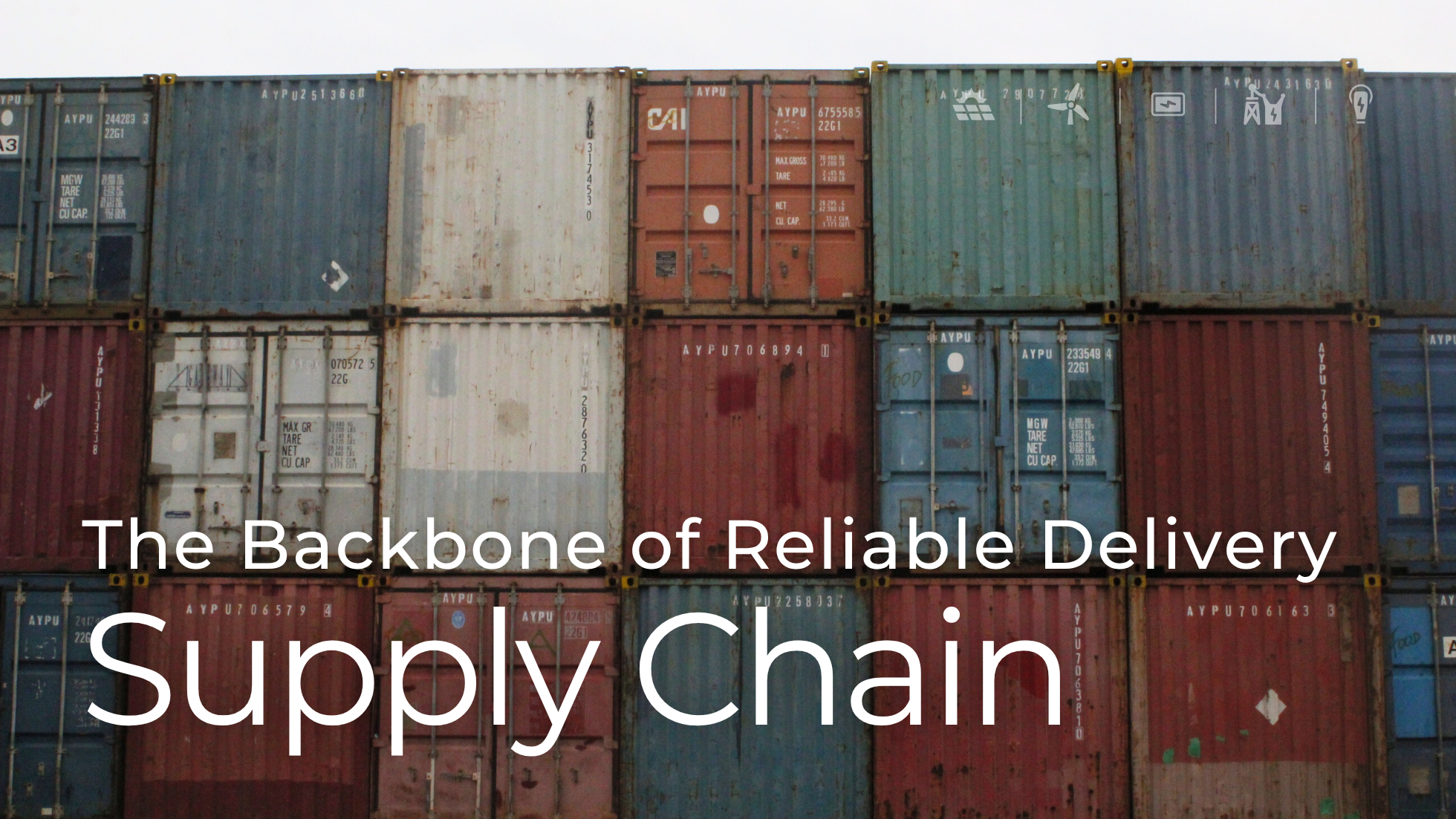Constructing Data Centers that Power Artificial Intelligence (AI) Learn More
Supply Chain, Partners & Vendors: The Backbone of Reliable Delivery

When we picture clean energy, it’s usually the finished product that comes to mind—solar panels catching the sun, battery systems storing power for peak demand. But long before any of them are installed, a different kind of work begins. Renewable energy infrastructure depends on an intricate supply chain—raw materials, components, and logistics—that quietly shapes the success of each project. It’s a system built on trust, timing, and technical precision, and it rarely gets the spotlight it deserves.
What Powers the Build
Clean energy projects are only as strong as the supply chains behind them. From core materials to final delivery, each component plays a specific role, and a delay in one can stall the entire project.
- Solar modules: Built from polysilicon, wafers, and cells, mostly sourced globally. U.S. production is growing, but it still depends on international inputs. SEIA Supply Chain Dashboard
- Battery systems: Lithium-ion units require critical minerals like lithium and cobalt. As storage demand grows, so does pressure on these supplies.
- Switchgear and inverters: These tie systems together. A single missing breaker or transformer can hold up testing and energization.
- Cabling: Copper and fiber ensure reliable control, communication, and monitoring, especially in large-scale deployments.
- Logistics: Even when parts are ready, shipping delays, port congestion, or customs issues can throw off schedules.
They may not be the most visible part of the project, but they’re among the most critical.
When Things Don’t Go as Planned
Even the best-run projects can face setbacks when the supply chain falters. In an industry driven by deadlines, disruptions can cascade quickly. The journey from manufacturing to deployment is fraught with potential challenges:
- Raw material shortages: Supply constraints on polysilicon, copper, or lithium can delay upstream manufacturing. Some solar components carry lead times of 6–12 months, especially when relying on international sources. SEIA Supply Chain Dashboard
- Shipping and logistics delays: Port congestion, limited vessel space, and customs holdups can stall critical deliveries, pushing schedules back days or even weeks.
- Quality or compliance issues: Equipment may arrive damaged, incomplete, or uncertified, especially for highly specialized gear like inverters or battery enclosures. These require rework, replacement, or re-inspection.
- Regulatory shifts: Updates to trade classifications, import requirements, or material certifications can affect timelines and sourcing. Even minor policy changes may require re-bidding components or adjusting procurement strategies mid-project.
One missed delivery or failed inspection can delay not only construction but also energization, utility interconnection, and revenue.
Mitigating Risk in a Moving Landscape
While no supply chain is immune to disruption, the renewable energy industry has developed smart strategies to minimize impact and keep projects on track. BEI adopts many of these same practices—partnering early, sourcing strategically, and planning with flexibility—to stay ahead of potential challenges and deliver with minimal disruption to clients.
- Diversified sourcing: Relying on multiple suppliers—often across different regions—helps reduce exposure to single-source delays or geographic bottlenecks.
- Long-term vendor relationships: Strong partnerships mean faster communication, more reliable lead times, and priority access during periods of high demand.
- Inventory buffers, in-house staging, and owned equipment: To stay ahead of long lead times, project teams often secure critical components well in advance, even stocking spares when needed. BEI supports this approach through its own warehouse, where materials are stored, managed, and staged. The company also owns over half of the heavy equipment used on its projects, reducing scheduling risks and adding flexibility when timing is tight. Together, these resources offer greater control when just-in-time logistics aren’t feasible.
- Flexible project planning: Construction managers increasingly sequence work to accommodate staggered deliveries, building what’s available first while waiting on delayed materials.
- Proactive logistics coordination: Early alignment with freight carriers, customs brokers, and site teams helps ensure nothing gets stuck in transit or shows up before the site is ready.
It’s not about avoiding problems altogether; it’s about building resilience so that when challenges arise, the project can keep moving.
What It Really Takes to Build Clean Energy
Clean energy doesn’t begin with a panel or end with a switch. It starts long before ground is broken—with planning, coordination, and a supply chain built on trust. Every project depends on the right materials arriving at the right time—and on the people who make that possible.
As demand for solar and storage continues to grow, so does the complexity behind the scenes. Staying ahead means more than reacting—it means building infrastructure that can absorb shocks and keep progress moving. That’s why supply chain strategy isn’t just a procurement issue. It’s a core part of delivering resilient, high-performance energy systems.